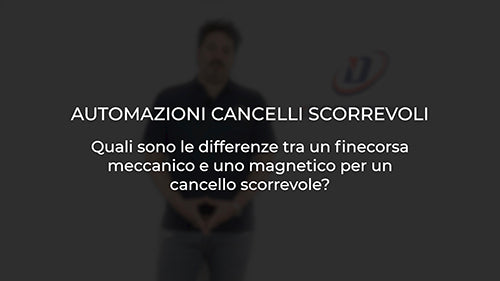What are the differences between a mechanical limit switch and a magnetic one for a sliding gate?
Types of limit switches
Sliding gate limit switches are mainly divided into two categories: mechanical and magnetic. Both systems aim to stop the gate's movement when reaching the desired position, but they operate in different ways.
Magnetic limit switch
The magnetic limit switch uses a magnetic optical reader to detect the gate's position. This system consists of:
- Magnet A and Magnet B: These magnets are strategically placed to detect the opening and closing of the gate.
- RID: The Inductive Distance Detectors (RID) are used to eliminate the need for physical contact, increasing the system's durability.
Mechanical limit switch
The mechanical limit switch, on the other hand, relies on a traditional system that includes:
- Spring: An elastic spring that provides the necessary force to activate the system.
- Microswitch: Two microswitches are used to detect the gate's position and intervene at the right moment.
Operation and applications
In terms of operation, the mechanical limit switch relies on physical contact, while the magnetic one is contactless. This leads to different applications and advantages:
- Reliability: Magnetic systems tend to be more reliable as they are not subject to mechanical wear.
- Maintenance: Mechanical limit switches require more frequent maintenance compared to magnetic ones, which can last longer.
- Precision: Magnetic limit switches offer greater accuracy in position detection.
Conclusion
In summary, the differences between a mechanical and a magnetic limit switch for a sliding gate mainly concern the technology used and the operating modes. While the mechanical limit switch relies on physical contact, the magnetic one uses contactless technology, offering advantages in terms of reliability and durability.

